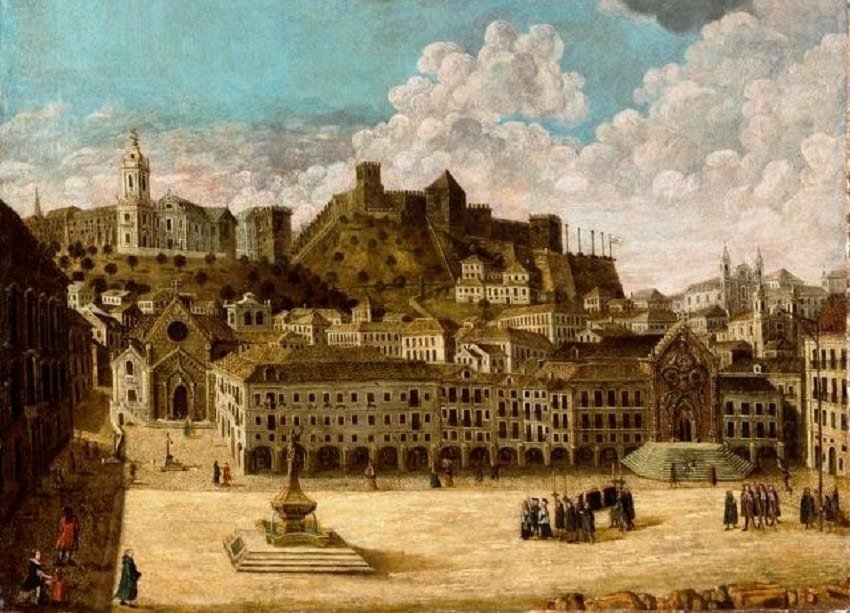You may have already heard about the terrible earthquake that hit Lisbon in 1755, right? But have you ever tried to imagine what the Portuguese capital was like before this tragedy? And what would the city be like today if the earthquake hadn't happened? It's difficult to know, but with the help of technology and old engravings, we can imagine what the city was like and what it would be like.
In the central area of the city, where Praça do Comércio is currently located (also known as Terreiro do Paço), there was the Igreja da Patriarcal, the recently built Ópera do Tejo and Ribeira das Naus, where there are shipbuilding yards. On November 1, 1755, All Saints' Day, at half past nine in the morning, the earth's crust moved into the depths of the ocean, off Portuguese territory, and the earth shook with such violence that a large part of the city was left reduced to rubble. With a magnitude of 8.7 degrees, the tremors lasted between six minutes and two hours. On a smaller scale, the 1755 earthquake is considered the first major natural catastrophe in history.

Lisbon before the 1755 earthquake almost completely disappeared, not only with the catastrophe of November 1st, but also with the reconstruction undertaken by the future Marquês de Pombal, minister of King D. José I, which resulted in a city with a regular and uniform blocks. All that was left of Baroque Lisbon was the memory of a mythical city that persists to this day and whose descriptions oscillate between extreme poverty, religious devotion and excessive opulence.
An hour and a half later the tsunami arrived, generated by the deformation of the seabed when the earthquake occurred, and flooded the riverside area of the capital. The areas not hit by the giant wave of almost ten meters caught fire, causing a huge fire that lasted five long days, caused by the stoves of dense baroque Lisbon, always lit, which covered Lisbon in black.

Recent estimates indicate that ten thousand people died, among the 200 thousand who lived in the city. Some will have remained under the rubble. Those who fled to the banks of the Tagus, especially Terreiro do Paço and Cais do Sodré, were caught by the giant wave, which advanced 250 meters into the city. To this day, this is considered one of the deadliest natural tragedies in modern history.
It was on top of these ruins that a Lisbon with wide, geometric streets was reborn in Baixa, as we know it now. The city built after the catastrophe – whose reconstruction work was directed by Sebastião José de Carvalho e Melo, the future Marquis of Pombal – thus buried many traces of the old one, described in the texts of the time as chaotic, whose streets and alleys did not follow any plan. prior.
Look in this video as was the 1755 earthquake in Lisbon.